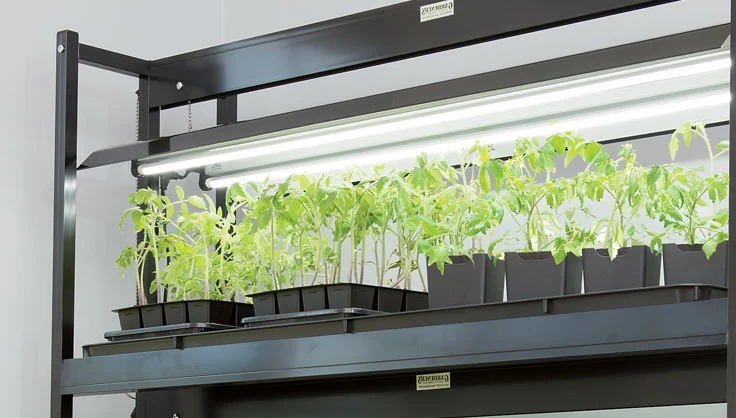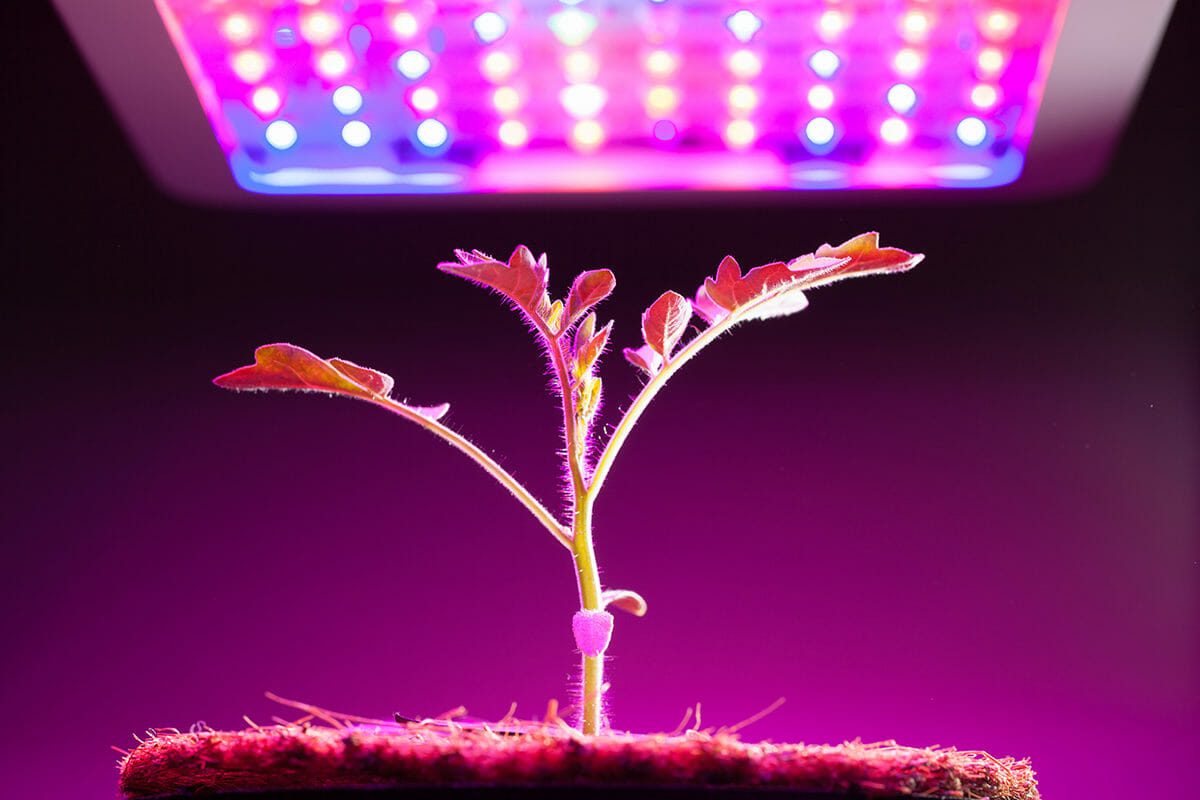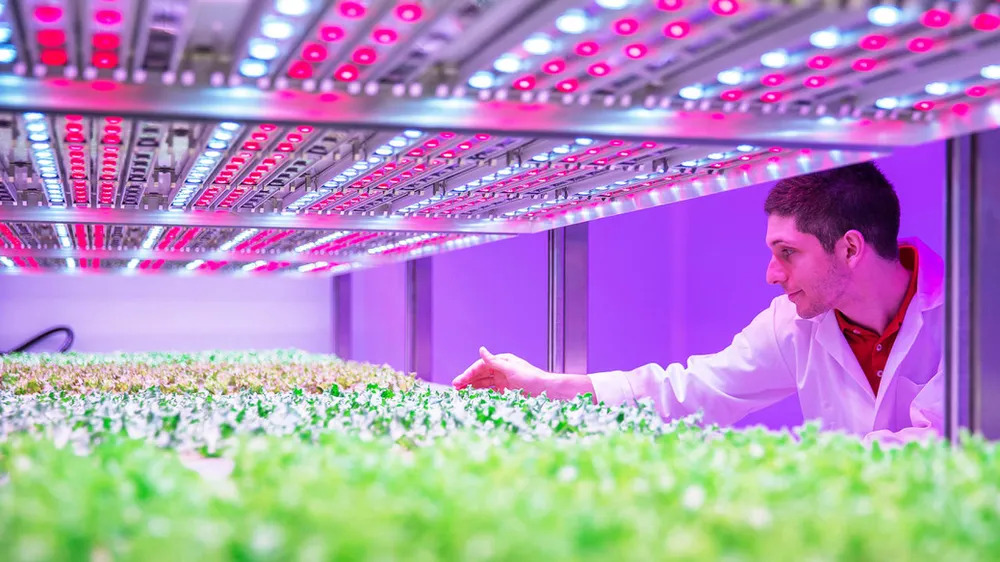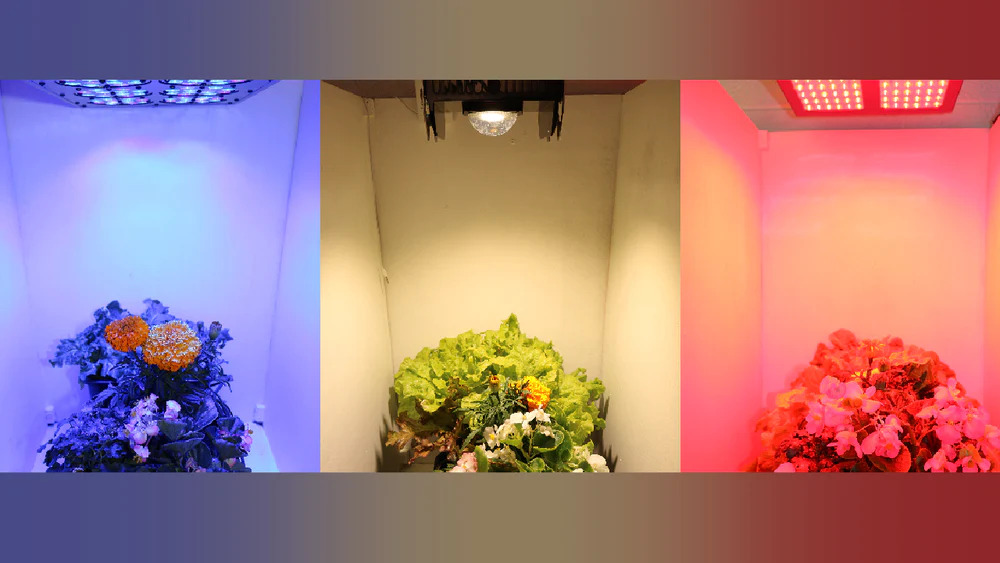Can Plants Grow In Artificial Light?
Curiosity about the potential of artificial light for plant growth has grown significantly in recent years. With advancements in technology, it's natural to wonder if plants can thrive without relying solely on natural sunlight. The answer is yes! Plants have the remarkable ability to grow and flourish under carefully calibrated artificial light sources. By understanding the principles of light spectrum, intensity, and duration, we can create optimal conditions for plant growth using artificial lighting systems.
What is Artificial Light?
Artificial light is a form of light that comes from an artificial source, such as fluorescent bulbs or LED grow lights. Unlike natural light, which comes from the sun, artificial light can be controlled and adjusted to suit specific needs. This makes it a highly beneficial tool for plant growth, as it allows plants to receive extra light beyond what they may receive naturally.
Using artificial light to supplement natural light can provide a number of benefits to plants. This is especially true when it comes to cultivating plants indoors, as artificial lighting offers a way to control and adjust the amount of light that the plants receive. By controlling and adjusting the light, gardeners can achieve optimal growth conditions for their plants.
How Effective is Artificial Light for Indoor Growing?
Artificial light has proven to be highly effective for indoor growing, enabling plants to thrive in environments where natural sunlight is limited or insufficient. The key to successful indoor cultivation lies in selecting the appropriate artificial lighting system and providing the right light spectrum, intensity, and duration.
Full-spectrum LED (Light Emitting Diode) lights are commonly used in indoor growing setups due to their energy efficiency and customizable light spectrum. These grow lights can mimic the different wavelengths of sunlight, promoting photosynthesis and overall plant growth. By adjusting the light intensity and spectrum, growers can optimize the conditions for various stages of plant development, such as vegetative growth or flowering.
Artificial light also offers advantages in terms of control and consistency. Growers can manipulate the light cycle to induce specific responses in plants, such as triggering flowering. Additionally, indoor cultivation minimizes external factors like weather and pests, leading to a more controlled and predictable environment.
Impact Of Artificial Light On Plants
Artificial light can have a significant impact on plants, both positive and negative. The key to using artificial light effectively is to understand how plants respond to different wavelengths, intensities, and durations of light.
On the positive side, artificial light can stimulate plant growth, increase yields, and control the timing of flowering. By adjusting the light spectrum and duration, growers can optimize plant growth and development, particularly in indoor settings where natural sunlight is limited.
However, excessive or poorly calibrated artificial light can also have negative impacts on plants. For example, light burn can occur when plants receive too much light, causing leaf damage and stunted growth. Similarly, insufficient light can result in weak or spindly plants, inadequate yields, and poor quality produce.
Can Photosynthesis Occur in Artificial Light?
Yes, photosynthesis can occur in artificial light. Plants rely on light energy to carry out photosynthesis, which is the process by which they convert carbon dioxide and water into glucose and oxygen. While natural sunlight is the primary source of light for photosynthesis in outdoor environments, artificial light can provide the necessary light energy for plants to undergo this vital process indoors.
To support photosynthesis, artificial light sources need to emit specific wavelengths of light, particularly in the blue and red spectrum, which are crucial for chlorophyll absorption. LED lights with customizable spectra are commonly used in indoor growing setups to mimic the different wavelengths of sunlight and promote photosynthesis effectively.
However, it is worth noting that not all artificial light sources are suitable for photosynthesis. For instance, incandescent bulbs emit a relatively low amount of usable light for plants.
Types of Artificial Lights
When it comes to indoor growing, selecting the right artificial type of light is crucial for the success of plants. Various types of plant lights are available, each with its own advantages and considerations. Understanding the different options can help growers make informed choices to create optimal lighting conditions for their plants.
Fluorescent Lights
Fluorescent lights have been a popular choice for indoor growers for several decades. These lights are energy-efficient, produce less heat than some other types of lighting, and emit a balanced spectrum of light that can support plant growth.
Fluorescent lights are available in different types, including T5 and T8 bulbs, which offer varying levels of intensity and color temperatures. They are well-suited for starting seedlings and supporting vegetative growth but may not be as effective for promoting flowering and fruiting.
One potential downside of fluorescent lights is their limited penetration, meaning they may not reach the lower parts of a plant effectively. As such, they may need to be positioned closer to the plant or supplemented with additional lighting to ensure even coverage.
LED Lights
LED (Light Emitting Diode) lights have gained significant popularity in recent years for indoor growing due to their numerous advantages. LED lights offer several benefits that make them a preferred choice for many growers.
Firstly, LED lights are highly energy-efficient, consuming less electricity compared to other lighting options. This efficiency translates into cost savings for growers over the long term.
LED lights also have a longer lifespan than traditional lighting sources, reducing the need for frequent bulb replacements. This not only saves money but also minimizes maintenance efforts.
One of the significant advantages of LED lights is their ability to provide a customizable light spectrum. By adjusting the combination and intensity of red, blue, and sometimes green diodes, growers can tailor the light to the specific needs of their plants at different growth stages. This versatility allows for precise control over plant development, from vegetative growth to flowering and fruiting.
LED lights emit very little heat, reducing the risk of heat damage to plants and enabling growers to position the lights closer to the canopy without harming the foliage. This close-proximity lighting promotes even light distribution and better penetration into the lower parts of the plant, maximizing photosynthesis and overall growth.
Halogen Bulbs
Halogen bulbs are a type of incandescent lighting that uses a tungsten filament enclosed in a halogen gas-filled bulb. While they share some similarities with traditional incandescent bulbs, halogen bulbs offer certain advantages that make them a slightly better option for indoor growing.
Halogen bulbs produce a brighter and whiter light compared to standard incandescent bulbs. They emit a higher intensity of light, which can be beneficial for promoting plant growth and development.
However, there are still limitations to consider. Halogen light bulbs emit a significant amount of heat, similar to incandescent bulbs. The high heat output can be detrimental to plants if they are placed too close to the light source. Additionally, the high energy consumption of halogen light bulbs can lead to increased electricity costs.
Compared to more advanced lighting options like fluorescent or LED lights, halogen bulbs are less energy-efficient and have a shorter lifespan. They also emit a broader spectrum of light, including a significant amount of infrared radiation, which may not be optimized for plant photosynthesis.
High Pressure Sodium Lights (HPS)
High Pressure Sodium (HPS) lights are a popular choice among indoor growers, particularly for flowering and fruiting stages of plant growth. HPS lights are a type of High-Intensity Discharge (HID) lighting that produce a strong yellow-orange light.
One of the main advantages of HPS lights is their high light intensity, which promotes robust flowering and fruiting. They are especially effective for plants that require a high level of light quality, such as tomatoes, and peppers. HPS lights are known for their ability to produce high yields and stimulate resin and essential oil production.
However, there are some considerations with HPS lights. They have a lower efficacy compared to LED lights, meaning they consume more electricity to produce the same amount of direct light. HPS lights also emit a significant amount of heat, requiring proper ventilation and temperature control to prevent plant stress or heat damage.
HPS lights emit a spectrum of light that is strong in the red and orange wavelengths, which is ideal for flowering but less beneficial for vegetative growth. As a result, many growers use HPS lights in combination with other light sources, such as metal halide (MH) lights, during different stages of plant growth to provide a more balanced spectrum.
Factors to Consider When Growing Plants in Artificial Light
When it comes to growing plants in artificial light, there are several important factors to consider. The success of indoor cultivation relies on understanding and optimizing these variables to create an environment that fosters healthy plant growth. From selecting the appropriate lighting system to managing light intensity, duration, and spectrum, growers must take into account various factors to ensure optimal conditions for photosynthesis, development, and productivity.
Blue Wavelengths and Photosynthesis
Blue wavelengths are an important component of the light spectrum for photosynthesis, the process by which plants convert light energy into chemical energy to fuel their growth and development. Blue light, with a wavelength of around 400-500 nanometers, is absorbed by chlorophyll and other pigments in plant cells and is essential for activating the light-dependent reactions of photosynthesis.
Blue light is particularly important for regulating plant growth and development, such as the opening and closing of stomata, which are tiny pores on leaves that regulate gas exchange and water loss. It also helps to regulate plant morphology, including stem and leaf development and the formation of chloroplasts.
However, excessive exposure to blue light can be harmful to plants and lead to photoinhibition or photo-oxidative damage. Therefore, it is important to strike a balance between blue and other wavelengths of light to optimize photosynthesis and minimize plant stress.
Light Intensity and Duration
Light intensity refers to the amount of light energy reaching the green plants' leaves, and it plays a crucial role in determining the rate of photosynthesis. Different plant species have varying light intensity requirements, with some plants needing higher indoor light levels than others. Insufficient light intensity can result in weak, leggy growth, while excessive light intensity can cause leaf burn and damage.
Light duration, or photoperiod, refers to the length of time plants are exposed to light each day. It influences the plant's growth and development, particularly in terms of flowering and fruiting. Certain plants require specific day lengths to initiate flowering, while others may require longer or shorter photoperiods to optimize growth.
Energy Efficiency and Cost Savings
Energy efficiency and cost savings are important considerations when growing plants in artificial light. Opting for energy-efficient lighting systems can help reduce electricity consumption and minimize operating costs.
LED (Light Emitting Diode) lights are known for their high energy efficiency. They convert a larger percentage of electrical energy into usable light, resulting in less wasted energy in the form of heat. Compared to traditional lighting options like incandescent or fluorescent bulbs, LED lights consume significantly less electricity for the same amount of light output. This energy efficiency translates into lower energy bills, making them a cost-effective choice in the long run.
Moreover, LED lights have a longer lifespan than many other lighting options, reducing the frequency of bulb replacements and associated costs. The extended lifespan and reduced maintenance requirements of LED lights contribute to additional savings over time.
Carbon Dioxide Levels for Plant Growth
Carbon dioxide (CO2) is a critical component for plant growth and development. It is a key ingredient in the process of photosynthesis, in which plants convert light energy into chemical energy to fuel their growth.
The amount of CO2 required for optimal plant growth depends on several factors, including the plant species, light intensity, and temperature. Generally, plants can tolerate a wide range of CO2 concentrations, with levels between 350-1000 parts per million (ppm) being the most ideal for most plant species.
Higher CO2 concentrations (above 1000 ppm) can improve photosynthesis rates, resulting in increased growth rates, yield, and plant size. However, excessive CO2 levels can lead to negative effects, such as reduced nutrient uptake, premature aging, and stunted growth.
What Color LED Light is Best For Plants?
Different colors of LED light have varying effects on plant growth, but the combination of blue and red light is generally considered best for plants. Blue light (wavelengths around 400-500 nm) is crucial for promoting vegetative growth, regulating stomatal opening, and influencing leaf development.
Red light (wavelengths around 600-700 nm) is essential for flowering and fruiting, as it stimulates the production of chlorophyll and other pigments. By providing a balanced spectrum of blue and red light, growers can optimize plant growth and development.
Some artificial grow lights offer customizable spectra, allowing growers to tailor the light composition to the specific needs of their plants at different growth stages.
Setting Up an Artificial Lighting System for Plants
Setting up an artificial lighting system for plants involves several key steps to ensure optimal growth and productivity. Here is a general guide to help you get started:
-
Determine your lighting needs: Consider the type of plants you are growing and their specific light requirements, including intensity, spectrum, and duration.
-
Select the appropriate lighting technology: LED lights are often preferred for indoor growing due to their energy efficiency and customizable spectra. However, other options like fluorescent or HID lights may be suitable depending on your needs and budget.
-
Calculate the required light intensity: Different plants have varying light intensity requirements. Measure the light intensity at the plant's canopy level using a light meter, and adjust the light source's distance and output accordingly.
-
Choose the right light spectrum: For optimal plant growth, provide a balanced spectrum of blue and red light. Customizable LED grow lights allow you to tailor the spectrum to different growth stages.
-
Set up proper lighting duration: Consider the natural daylength requirements of your plants and provide an appropriate photoperiod using timers to control the lighting schedule.
-
Position the lights correctly: Ensure uniform light distribution by positioning the lights at an appropriate distance and angle to cover the entire plant canopy.
-
Monitor and adjust: Regularly monitor the plant's response to the lighting system and make adjustments as needed, considering factors such as plant growth, light intensity, and heat levels.
Remember to consult specific plant care guidelines and adjust your lighting system accordingly to meet the unique needs of the plants you are growing.
Artificial lighting has revolutionized indoor plant growth, enabling growers to cultivate a wide variety of crops year-round. With the right combination of light spectrum, intensity, duration, and technology, growers can optimize plant growth and yield, reduce energy costs, and minimize environmental impact.












